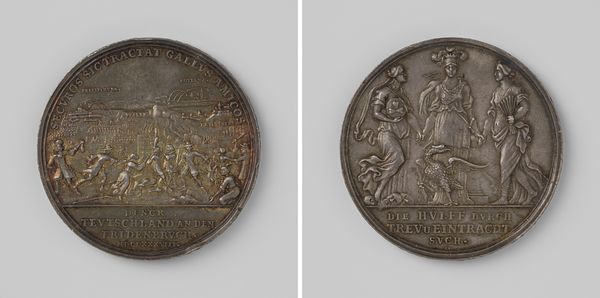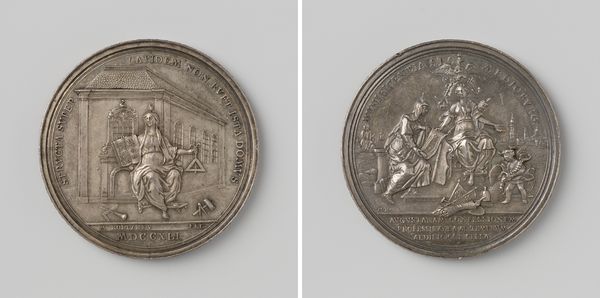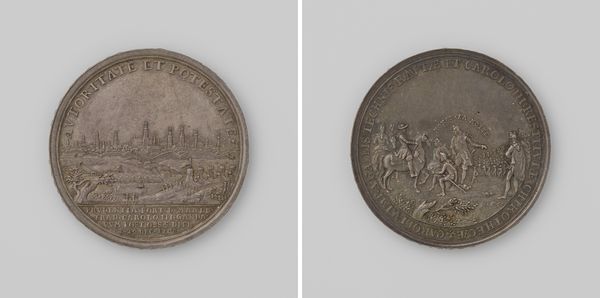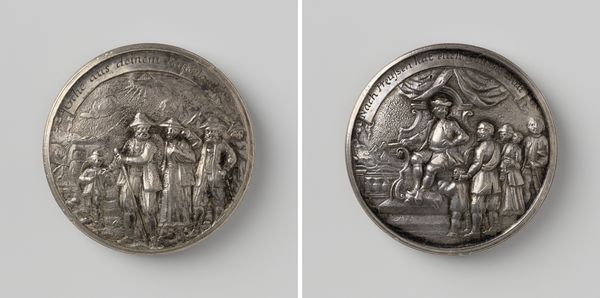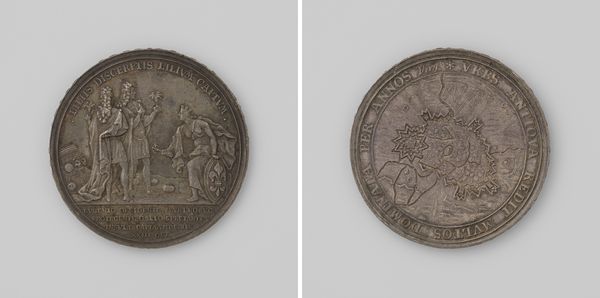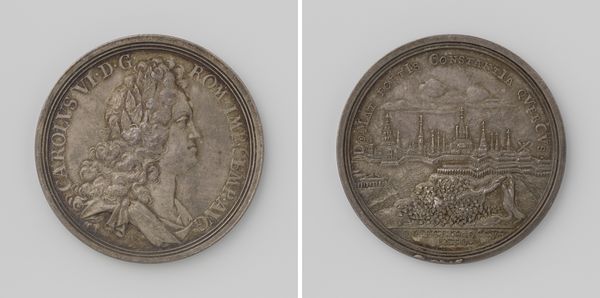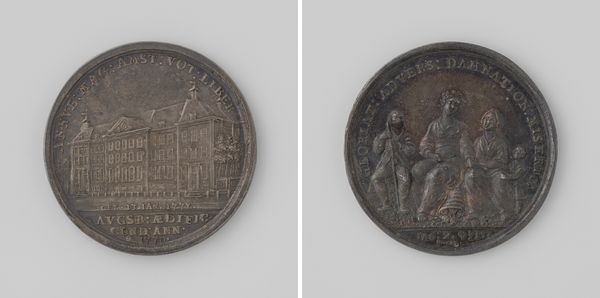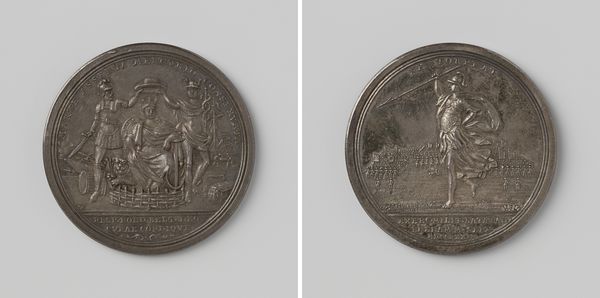
metal, relief, sculpture
#
narrative-art
#
baroque
#
metal
#
sculpture
#
relief
#
sculpture
#
history-painting
Dimensions: diameter 4.4 cm, weight 29.29 gr
Copyright: Rijks Museum: Open Domain
Curator: This is a medal from 1733, "Opname der Salzburger emigranten in Nederland," depicting the reception of Salzburg emigrants in the Netherlands, created by Martin Holtzhey. Editor: It's striking, the way the artist used a small, circular space to convey such a loaded historical narrative through relief. There is something fascinating about seeing history pressed into metal like this. Curator: Indeed, these medals served a vital public function. They weren’t simply decorative; they communicated and reinforced prevailing attitudes towards these refugees and the policies enacted to assist them. It also is important to keep in mind the political dimension. Remember that Salzburg Protestants were forced to leave their homes. Editor: The choice of metal as the medium feels deeply connected to labor. There must have been a number of specialized laborers involved in creating an artwork such as this. From the metal workers, to the relief sculptor. One cannot help but imagine them and their own lives. Curator: Exactly. The medals acted as potent instruments for disseminating information and shaping public sentiment during a period marked by religious conflict and population migration. Also, do not forget that the engraver of the medal, Holtzhey, was one of the most reputable during his days. Editor: Looking closely, one can discern a symbolic scene on the other side – what seems to be a depiction of a Dutch maiden welcoming the migrants with bounty at her feet, under the protection of Providence? Curator: That is correct, embodying the country's perceived benevolence and prosperity in welcoming these exiled Protestants from Salzburg, reinforcing a powerful statement of Dutch religious tolerance and economic stability during this tumultuous era. Editor: Considering all the social forces intertwined, the politics and history involved in shaping narratives, makes for an invaluable insight when you engage the physical artwork, doesn’t it? Curator: Absolutely. It is so compelling how one seemingly modest piece can tell an elaborate tale of societal and institutional interaction. Editor: It definitely allows for a profound understanding of history as told by common materials turned to a piece of art.
Comments
No comments
Be the first to comment and join the conversation on the ultimate creative platform.


